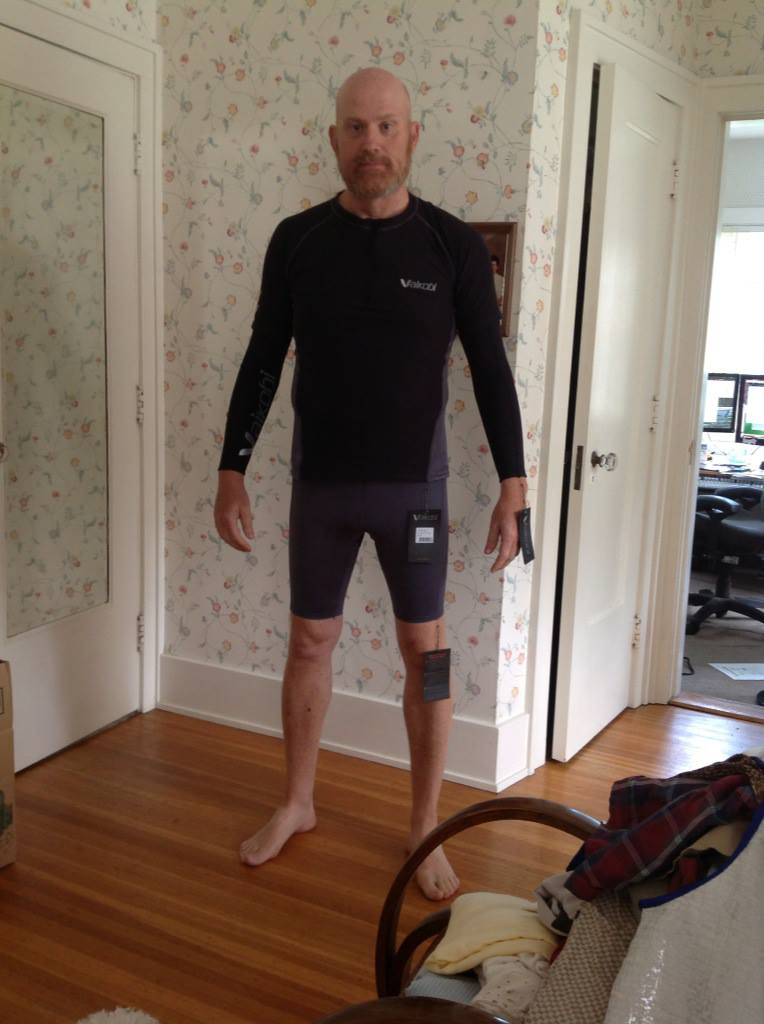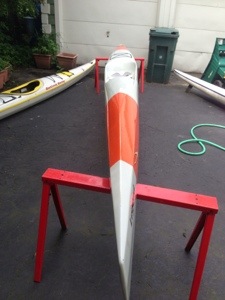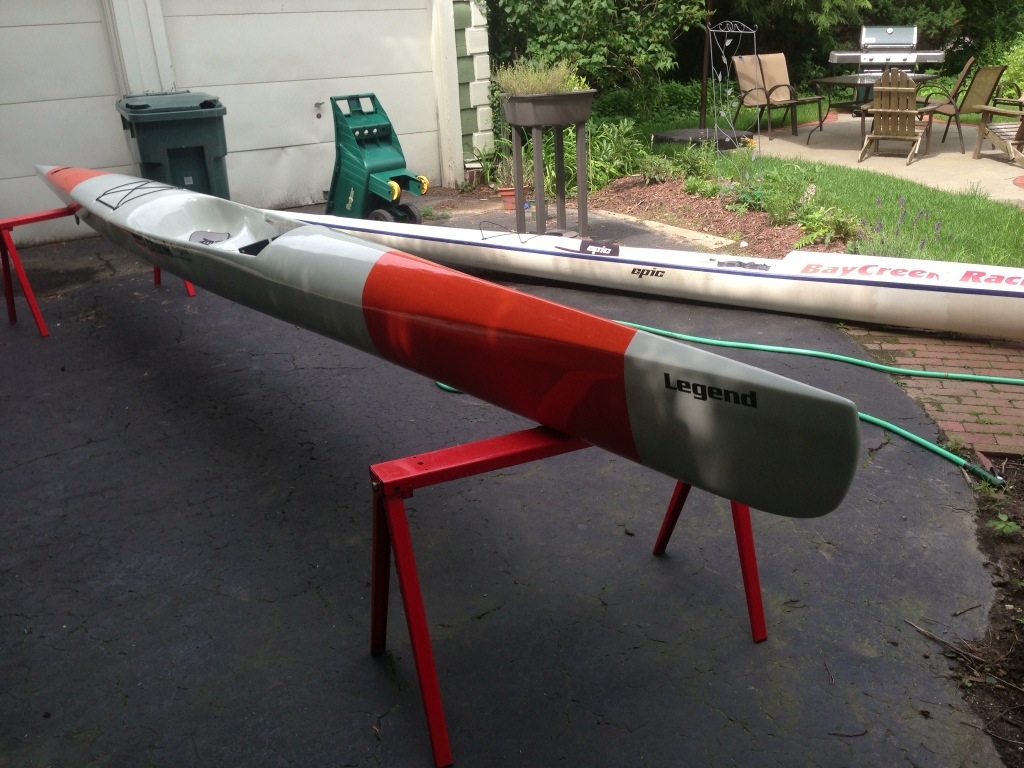Today was the first of this year’s edition of Baycreek’s famous “Downwinder” series. Basically Ken figures out which way the wind is blowing on the lake, and arranges a boat shuttle so that we can put in and paddle with the wind and waves for a decent distance.
Today, the wind was blowing from the west, and the waves were decently high. We put in at Little Pond, in Greece, and paddled to Irondequiot Bay outlet. As is usual for Lake Ontario, the waves were at an angle to the shore, so we paddled out a bit and then turned downwind to surf. The waves were big, but they were moving faster than you could surf them, so you’d get on a wave, get a short ride, and then it would overtake you. You’d then try to build up some speed before the next one, but the distance between them was too short. Not too long into it, I realized that the other two kayaks, Paul and Matt, were behind me and I couldn’t turn around to see them. I also realized that we’d cut downwind too early and so the waves were carrying us into the middle of the pier at the Genesee River. So I was trying to paddle at an angle to the waves, increasing the difficulty – when a bigger wave hit, you’d have to turn towards the middle of the pier again, and then when you got a lull turn almost 90 degrees to the waves and paddle hard to make up some distance to clear the pier. And to add to the difficulty level, I was also getting hit with waves that had bounced off the pier and back at me.
I managed to just clear the pier, passing a few feet away, which was much closer than I’d hoped. After I cleared it, I kind of blundered in front of a sail boat coming out of the river, but he turned to avoid me and didn’t even yell at me. (It was about 6pm and there was a continual line of boats coming out of the river.) I cleared the river and got into what seemed like much easier waves without the bounces from the pier, and I could finally look around a bit and have a drink. Paul came around the end of the pier and yelled to me something about Matt. I turned around to paddle back to him to see what the problem was – I think he thought that Matt might have abandoned the downwinder and returned to the put-in. As I got up close to him, I was back in the churn of waves from upwind, echoes from the piers, the current from the river, and lots of boat wakes, and I dumped. Unexpectedly, however, when I attempted to remount instead of getting stabilized I went over the other side. And again and again. I asked Paul to come up to let me lean on his boat to stabilize, but when he managed to make it up to me I went over again. There was a largish sailboat hanging around asking if we needed help. Initially I waved them off, but after the fourth or fifth attempt to remount I was getting tired, so I asked them if they could tow me into the more sheltered water behind the pier. They threw me a rope and towed me, but when we got there, instead of just using their boarding ladder to stabilize myself as I remounted, they insisted that I come aboard “for a rest”. They were very insistent, and because they’d helped so much at this point I didn’t want to be rude and force my opinion. So I came aboard.
They ended up driving me all the way to Durant beach, with Paul and Matt paddling along behind us. Sitting there on their boat “resting” made me cold and cramped up, but after they anchored in 5 feet of water off Durant beach, I was able to use their ladder to stabilize myself and remount. I paddled off cautiously – the waves were diminished and only coming from one direction, but like I say, I felt kind of cramped up and cold so I wasn’t at the top of my game. Again we had to head out to sea to get a better angle to our destination so we could surf there instead of going at 90 degrees to the waves. And again, I don’t think we went out far enough, because later I found myself trying to surf at an angle to make it to the beach that was our destination. Still getting only short runs, but it’s better than paddling across the waves, anyway.
Just off the beach, though, I caught a wave that didn’t overtake me and didn’t die. It was the longest fastest run of the night – I glanced down at the GPS at one point and I was hitting 15km/hr. That was the highlight of the night for me.



